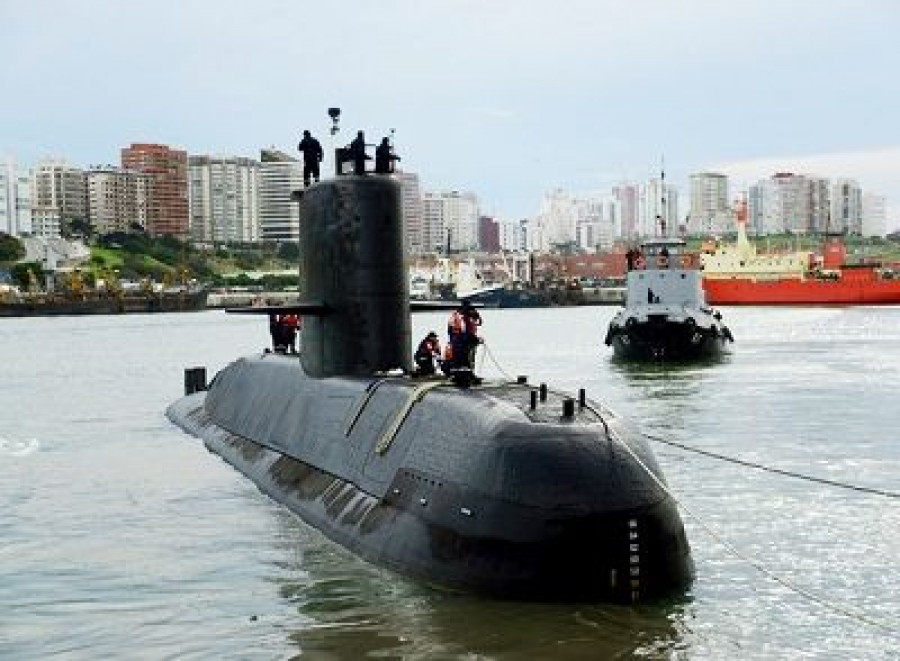The ARA San Juan crew died in 30 milliseconds due to a hydrogen explosion

Infodefensa.com has had access to the Bruce Rule's final report about ARA San Juan. On August 4th, Rule, the retired lead acoustic analyst at the US Office of Naval Intelligence for four decades, author of major assessments on the losses of the USS Thresher and USS Scorpion who testified before a US Navy Court of Inquiry regarding the loss of the Thresher, presented his final assessment on the loss of the Argentinian submarine ARA San Juan.
The report states that all assessments are based on known information and logical conclusions derived from the analysis of that information. It also discards any attempts to arrive at conclusions or add conjectures that have no scientific basis or supporting data. In this regard, the unsupported conjecture that the crew fought a fire for hours without releasing an emergency signal buoy is rejected. This assessment also mentions that it is not useful to conjecture about the possible outcome of the situation if, the decision to continue navigating surfaced rather than to submerge, would have changed the outcome of the ARA San Juan demise. Such ‘alternate possibilities’ as defined in the assessment cannot be demonstrably proven probable because multiple variables including very rough seas with 6 to 7-meter waves would have made navigating a surfaced submarine extremely complicated and uncomfortable for the crew. Also, the possibility of a second explosion that could have rendered the submarine uncontrollable is unsupported conjecture as there is no information that substantiates that conjecture.
A catastrophic event
Mr. Rule analysis indicates that the ARA San Juan suffered a catastrophic event, the explosion of hydrogen generated by the short-circuits of the water damaged forward battery group after sea water accessed the battery compartment through the snorkel. The explosion occurred about one hour 40 minutes after the submarine submerged and did not breach the boat hull. This explosion was not strong enough to be detected by the closest Comprehensive Nuclear Test Ban Treaty Organization (CTBTO) underwater acoustic sensor, located at 6040 km from the submarine position. After this initial event, the submarine with all its crew members deceased started an uncontrolled descent from 40 meters at an immersion rate of 1.1 meters per second collapsing at 468 meters. The implosion of the submarine hull produced a bubble-pulse signal of 4.68 Hz at 1351 GMT on November 15th, 2017. This signal was detected by CTBTO acoustic sensors at very long distances, including sensors located at 7730 km from the point of origin. The analyst used the empiric relationship between the volume of an air-filled structure and the number of times in the initial second the pressure differential created by collapse (implosion) of that structure cycles from compression to expansion and then back to compression, the bubble-pulse frequency, to determine the exact depth at which the submarine imploded. This calculation inquired by Infodefensa.com gives a depth of 468 meters with an energy release from the implosion equal to the explosion of 5216 kg of TNT.
Based on the information provided by the San Juan Commanding Officer, stating that he ordered the boat to be submerged to 40 meters to repair the batteries and allow the crew to rest, indicates that there was at least an intention to send personnel to attempt a repair of the damaged batteries. While previous US submarine catastrophes related to battery generated hydrogen changed the procedures indicating that no personnel could enter the battery well of ships having open tank ventilation systems while a charge is in progress and also that all individual battery explosions (as 1968) had occurred while personnel were working in the battery spaces during the charge, in San Juan’s case, given the fact that it was not charging its batteries at the moment of the explosion, indicates a spark probably caused the ignition of the hydrogen generated by the short-circuited batteries while the San Juan was submerged and unable to ventilate with outside air to reduce the hydrogen content within the submarine.
30 milliseconds
As for the crew members, this hydrogen explosion was an extremely fast event that took about 30 milliseconds to be transmitted through the whole submarine, way faster than the minimum cognitive recognition time of a human which is between 80 to 100 milliseconds, means that all personnel died instantly without any suffering or knowledge of what was happening. The fact that after the initial explosion there was no emergency buoys released substantiates this assessment and debunks the unsubstantiated report that the crew fought a fire for hours.
The report provided to Infodefensa.com by Mr. Rule, with its detailed and precise information, provides clear and unbiased explanations of what happened to the ARA San Juan on its last voyage without looking to find a culprit but to provide a detailed chronology of the events that ended with the loss of the Argentinian submarine. While the crew family members and general press are looking for responsibilities and individuals to be held accountable, this justified but passional claim should not encroach the technical analysis that provides an account of the events. Unfortunately, since the tragic loss of the ARA San Juan, many published reports are plagued with conjectures, false information and assumptions that cloud the real search for the truth and generate more anxiety and confusion among those that have suffered the loss of a loved one. While this report will not ease their pain or find a culprit, it does confirm that none of the crew members suffered any pain during this tragic event.








